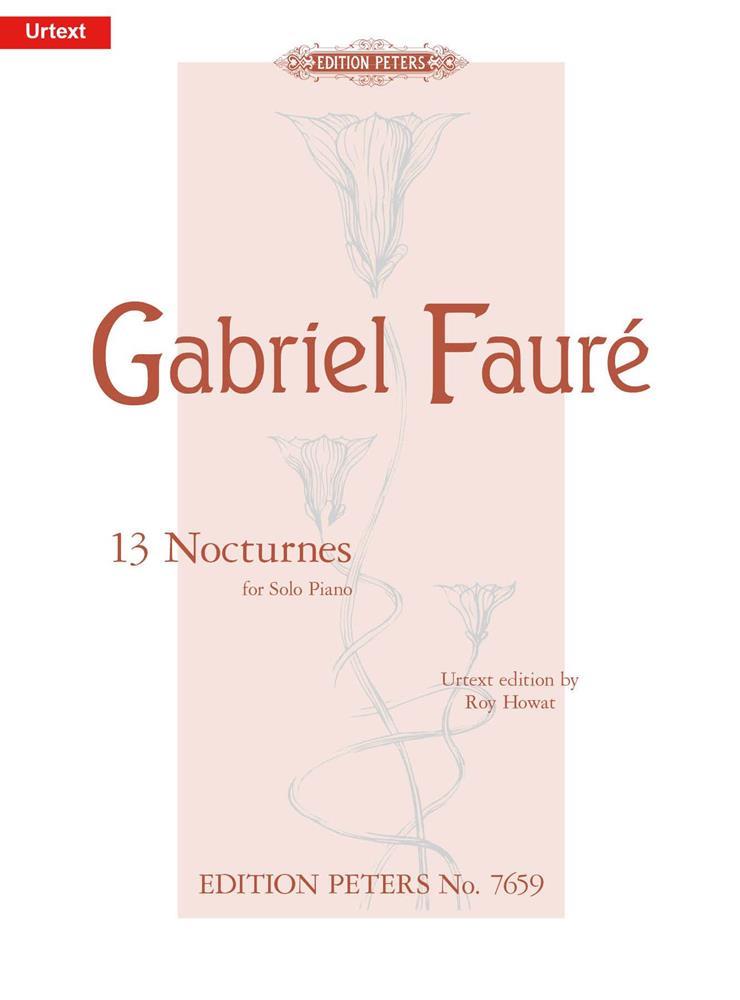
C. F. PETERS - 100400
Faure 13 Nocturnes
Composer: Gabriel Fauré
Publisher: Edition Peters
Instrumentation: Piano
Faure 13 Nocturnes
Juilliard Store
144 West 66th Street
New York NY 10023
United States
Choose options
Faure 13 Nocturnes
Juilliard Store
144 West 66th Street
New York NY 10023
United States
Faure 13 Nocturnes
Juilliard Store
144 West 66th Street
New York NY 10023
United States
A new edition of Faure's nocturnes has long been needed, to clean up literally hundreds of old misprints and dubieties. Roy Howat, a noted French music specialist, has compared all known manuscripts and prints from Faure's lifetime, including a few of Faure's own printed copies showing numerous written corrections by him that never made it into the 1924 Hamelle edition,along with some piano rolls recorded by Faure, and memoirs and scores marked up by pianists who worked with him. Includes a preface which incorporates some performing advice that can be traced back to Faure, anddetailed critical commentary.
Just as this remarkable series of works spanned virtually the whole of Fauré's compositional career, so they can give us a lifetime of enrichment. One can only marvel at the source of inspiration which brought into being such profound utterances as the 6th or 10th Nocturnes, to name but two examples. The 'Nocturnes' had a particularly unfortunate publishing history. As a result, Howat identifies literally hundreds of corrections, amendments and alternatives deriving directly from Fauré's own pen. Characteristically, Howat is also always alert to the restless, fecund spirit of Fauré's creativity; as such, he tends to regard slight discrepancies in repeat or parallel passages as perfectly deliberate, rather than composer 'errors' to be standardized. Among the multiplicity of sources consulted are piano-roll recordings of three of the Nocturnes by the composer himself.
The new London Peters edition (which replaces the Leipzig one) has compared all known manuscripts and prints from Fauré's lifetime, along with some piano rolls recorded by Fauré and memoirs and scores marked up by pianists who worked with him. A few of Fauré's own printed copies survive, showing numerous written corrections by him that never made it into the 1924 re-edition and which are now printed for the first time. The preface includes some performing advice that can be traced back to Fauré; it bears out his wish to have his music played in time and up to his dynamics, without sentimental rallentandi or soggy rubato."
Roy Howat, 2006
